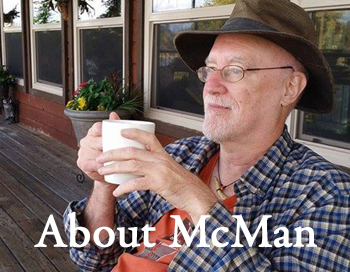
Mood
 FIGURING OUT DEPRESSION
FIGURING OUT DEPRESSION

Your doctor confirms what you already know. Now what?
by John McManamy

Your doctor confirms what you already know. Now what?
by John McManamy
YOUR DOCTOR has just told you that you have depression, but you already knew that. Your brain, in essence, has quit on you. You feel distressed, you're not thinking right, you can't function. But what is it? What is "depression"?
The short - and accurate - answer is we really don't know. A smart clinician will dig deeper and ask questions. So let's start asking:
Depression - Vegetative or Agitated?
Another way of phrasing this is "retarded or energized." All the other distinctions can be regarded as subsets of this one.
In other words, are you feeling sort of like you have a bad cold but without the runny nose, fever, and diarrhea? No energy? Can't get started? No motivation? Can barely string two thoughts together? Just want to curl up into a ball and not wake up? Your clinical condition is dead but breathing. You get the picture.
Or does your depression feel more like you're in neutral, but with the motor running out of control? "If only, if only," a piece of your over-ruminating prefrontal cortex may be chanting. "I can't take it!" the primitive reacting limbic region of the brain may be screaming. You want to grab the world by the throat and shake it. Folded into all of this may be anxiety. You get the picture.
Two very different mental states, obviously. But way too many doctors (my guess is most) refer to both conditions as "depression" and send patients out the door with the exact same prescription. If we are to refer to two very different clusters of symptoms by the same name, we obviously need to add modifiers. The DSM makes an unconvincing attempt with a "melancholic/atypical" distinction.
"Vegetative/agitated" is far more clear-cut. Alas, life is never that simple, as symptoms never neatly separate into easy distinctions. But at least we have something to work with.
Moving on ...
Depression - Too Much Emotion or Too Little?
Feeling sad? Guilty? Angry? Can't stop yourself from bursting into tears? Can't stop the explosive outbursts?
Or maybe you're beyond feeling sad or angry or upset. Feelings don't register. You feel emotionally numb. You don't care.
The DSM-5, psychiatry's diagnostic bible, makes an attempt to differentiate these states in the first two symptoms of its nine-symptom check-list (feeling "depressed" vs "loss of pleasure"), but makes no attempt to flag their significance or to bring them into sharper relief.
Depression - Too Much Mental Activity or Too Little?
Over-ruminating on destructive thoughts? Over-anxious? Feel like crawling out of your skin? Over-sensitivity to a frightening world? Easily distracted? But perhaps you can still laugh if you saw someone slipping on a banana peel?
Or maybe it's the other way around: Even routine mental tasks are impossible. Nothing is getting through, like a web page that won't load. Your immediate surroundings barely exist, your future impossible to contemplate. You can't even taste your food.
SIGN UP FOR MY FREE EMAIL NEWSLETTER
The DSM refers to "diminished ability to think or concentrate," but what does that mean? If you are having trouble punching your PIN number into an ATM, for instance, is it because you are too mentally agitated to focus on the task at hand or is it because your frontal lobes simply won't cooperate?
Our diagnostic bible is inexcusably vague.
Depression - Physically Wound Up or Wound Down?
Our physical symptoms are a dead give-away of our mental states, such as pacing about and not being able to sleep, or - alternatively - dragging your feet and not being able to get started.
The DSM's checklist includes four symptoms that are mainly physical in nature, three of them expressed in terms of too much or too little (sleep, eating, psychomotor activity) and another as lack of energy. But the DSM completely misses that physical symptoms are merely indicators of a disease of the brain, and should not be confused with the disease itself. Admittedly, sleep and fatigue do have a mental component, but in the DSM context this is completely accidental.
To use a medical analogy, a shooting pain in the arm tells us to look for a heart attack. Then, our attention focuses on the heart, not the arm.
Depression - Behavior:Under-Engaged or Over?
Unable to engage in routine tasks (such as not turning in an assignment) or engaging inappropriately in routine tasks (such as messing up an easy assignment)? Overly cautious (such as avoiding others) or totally reckless (such as taking street drugs)?
You may get away with masking your inner turmoil from the outside world for a little while. Then, someone other than the cat notices you haven't been emptying the litter box. The only specific behavior the DSM refers to is a suicide attempt. We really don't want to wait for that to happen.
Depression - A Rough Guide
Figuring out depression is very binary, really. Emotion, mental activity, physical activity, and tell-tale behavior - too much or too little, high or low, up or down, under or over. Gradually a picture begins to emerge, a very complex one full of anomalies, a testament to your uniqueness and to the fact that no two depressions are alike. Nevertheless, the picture is likely to resolve one of two ways.
We are separating - light from dark, firmament from heaven - looking for some kind of resolution - however fuzzy and distorted - into vegetative or agitated. Even if we land somewhere in the middle, the result tells us something. In effect, we have succeeded in peering past the featureless void of "depression" into a more differentiated universe of light and shade.
Which side of the universe you find yourself on suggests different (though overlapping) treatment and recovery strategies: energizing agents and lifestyle practices for vegetative depressions, calming agents and lifestyle practices for agitated depressions.
Keep in mind: We are merely laying down some navigational aids, distinguishing north from south, east from west. It may be that first you have to travel south to head north or east to head west. But to do that, first you have to know where you are right now and where you need to be heading.
Oops!
Depression is very much of a shape-shifter, with today's depression often looking very different than yesterday's depression. We see this, for instance, when anxiety gives way to despair. Think of anxiety as the brain putting up a fight. Think of despair as the brain giving up. From over-activity to under-activity. From agitated to vegetative.
It can work the other way around when the brain begins booting back up.
The Trouble with the DSM
Despite the fact that the DSM checklist (see the first article in this series) strongly suggests polar opposites to our thoughts and feelings, everything erroneously resolves into the single phenomenon of "depression." Even a specifier such as "atypical" fails to remedy this gross over-simplification.
The same criticism also applies to standard depression tests, such as the Hamilton Rating Scale for Depression (HAM-D), which offers a longer (17 or 21-question) symptom checklist.
We're Only Just Getting Started
Depression is a highly complex phenomenon. In all likelihood, we are dealing with dozens of different illnesses, with different causes and effects and environmental risks. Having said this, at other times it pays to look at depression as one illness with a zillion permutations.
The vegetative/agitated distinction is merely the first thing you need to know.
Next article: Placing Depression In Context
This article is the second in a four-part series. Previous article: Depression - What Is It?
Reviewed June 16, 2016
NEW!
Follow me on the road. Check out my New Heart, New Start blog.












